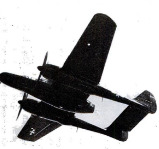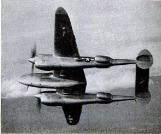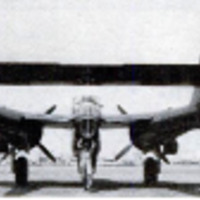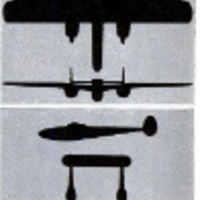Modeling the black widow
Item
-
Title (Dublin Core)
-
Modeling the black widow
-
Article Title and/or Image Caption (Dublin Core)
-
Modeling the black widow
-
extracted text (Extract Text)
-
NOW being loosed to haunt the Axis like
a ghost of the midnight sky, the
AAF's new interceptor-fighter—the P-61—
is ebony in color for low visibility at night,
as deadly as human ingenuity can make it,
and so maneuverable and powerful that spe-
clal tactics had to be invented by the Army
for its use. It is appropriately named Black
Widow after the voracious spider. Capable
of extremely high speed at medium alti-
tudes, it 18 our first twin-boom radial-engine
fighter. The long gondola holds a three-man
crew—a pilot, a gunner, and a radioman,
Because of its distinctive characteristics,
it is easily recognized. Head on, it looks
like a Mitchell B-25 bomber. In general, it
resembles the Lockheed P-38 Lightning, but
it may be distinguished from that plane be-
cause the gondola extends beyond the trail-
ing edge of the wing and the elevator does
not extend beyond the rudders. Also, it has
radial engines as opposed to the in-lines of
the P-38.
The construction of the model is similar
to that of the other models in this series
(see, for example, P.S.M., Nov. "44, p. 165).
Note that heavy lines enclose the model in
the accompanying drawing. When taking
oft dimensions, measure to the inside of all
such lines. The wing is best made all in
one piece, then cut into four sections and
fastened to the gondola and the booms with
dowels, glue, and wood putty. Finish the
model with dull black paint.
-
Language (Dublin Core)
-
eng
-
Date Issued (Dublin Core)
-
1945-01
-
pages (Bibliographic Ontology)
-
161
-
Rights (Dublin Core)
-
Public Domain
-
Archived by (Dublin Core)
-
Sami Akbiyik
-
Marco Bortolami (editor)
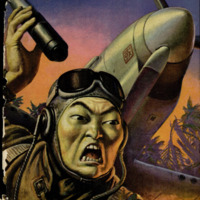 Popular Science Monthly, v. 146, n. 1, 1945
Popular Science Monthly, v. 146, n. 1, 1945

